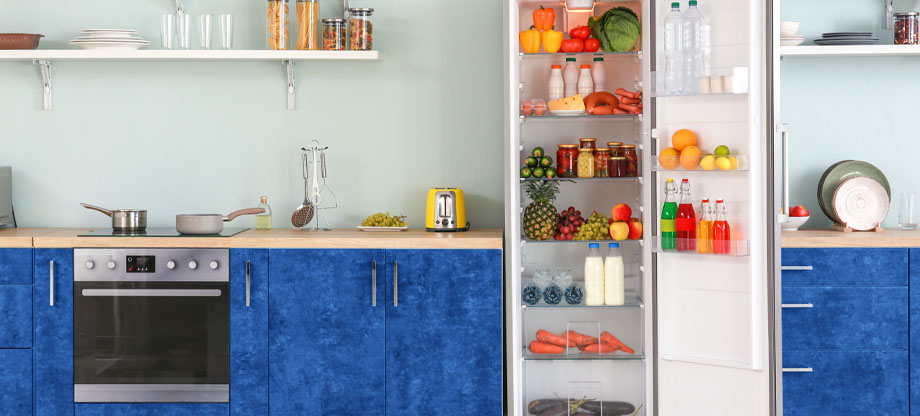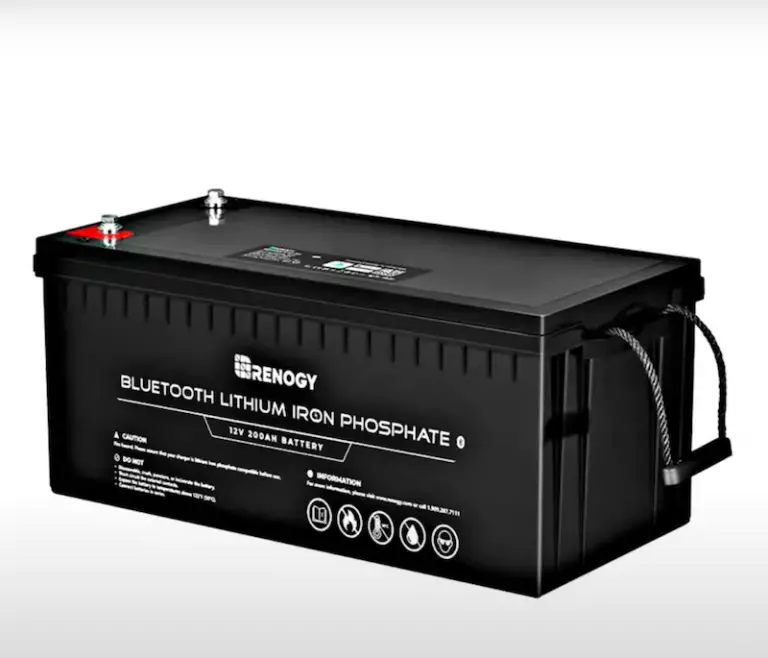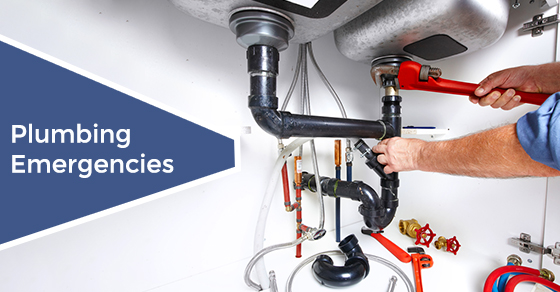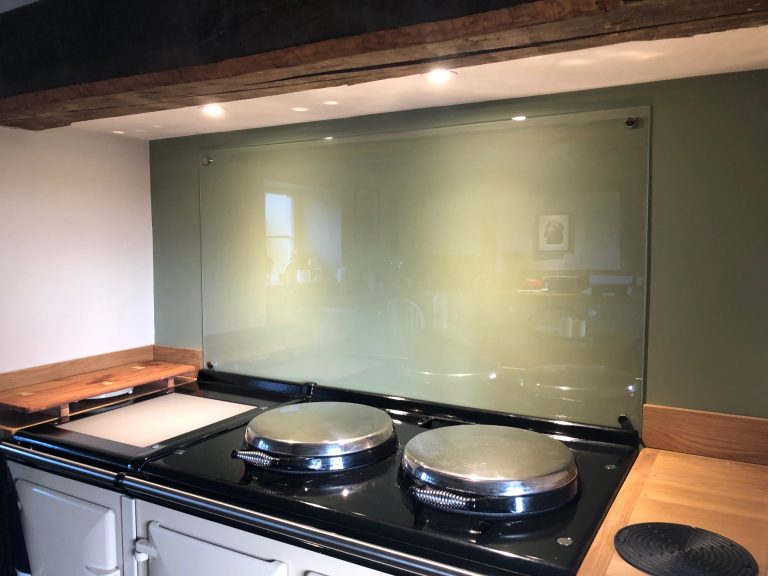What Are The Do’s And Don’ts Of A Refrigerator?
The refrigerator is one of the most important kitchen appliances in any home. It is a great way to store food and keep it fresh and safe. However, there are certain do’s and don’ts that must be followed when it comes to using and maintaining a refrigerator. It is important to understand these do’s and don’ts to ensure the long-term functioning of the refrigerator and to keep food safe and fresh. The do’s of a refrigerator include cleaning it regularly, keeping the temperature between 0°C and 5°C, using airtight containers to store food, and not overcrowding the shelves. The don’ts of a refrigerator include not storing raw meats near ready-to-eat foods, leaving the refrigerator door open, and putting hot food directly in the refrigerator. By following these do’s and don’ts, you can ensure that your refrigerator is functioning well and that your food is safe and fresh.
Benefits of Having a Refrigerator
Refrigerators are one of the most essential appliances in a home and can provide a range of benefits. Not only do they keep food fresh, but they also help to reduce food waste and can save you money. Refrigerators can also provide you with more storage space, and they can help you to maintain a healthier lifestyle. A refrigerator helps to keep food fresh and safe by reducing the growth of bacteria and other microorganisms, and it also helps to keep fruits and vegetables fresh for longer. Refrigerators are also very energy efficient, and they can help to reduce energy costs in your home. Additionally, having a refrigerator can help you to reduce food waste as you can store leftovers and make sure that they don’t go to waste. Finally, refrigerators can also help to reduce clutter in your kitchen and provide you with extra storage space.
Refrigerator Maintenance Tips
Maintaining a refrigerator is key to getting the most out of its performance and lifespan. To keep it functioning efficiently and effectively, it’s important to follow important do’s and don’ts. From cleaning to temperature, and condensation, here are some important refrigerator maintenance tips to keep in mind.
Clean the refrigerator regularly and thoroughly. It’s important to take the time to clean out the refrigerator, especially if it contains food that’s been there for some time. When cleaning, make sure to use a mild soap and warm water.
Don’t overfill the refrigerator. Too much food can cause the unit to overwork and strain the cooling system. To ensure proper airflow, leave at least an inch of space between food items.
Keep the temperature at the recommended setting. This will ensure that food stays fresh and cold and prevent the motor from working too hard.
Don’t keep items that don’t belong in the refrigerator. This can lead to odor and bacteria buildup, which can contaminate other food.
Do defrost the refrigerator as needed. This will keep the unit running efficiently and help to prevent the buildup of mold and bacteria.
Don’t leave the door open any longer than necessary. Every time the door is opened, warm air enters the refrigerator, causing the unit to work overtime to keep things cold.
By following these dos and don’ts of refrigerator maintenance, you can ensure that your refrigerator is running smoothly and efficiently. With proper care, your refrigerator will stay in top condition for years to come.
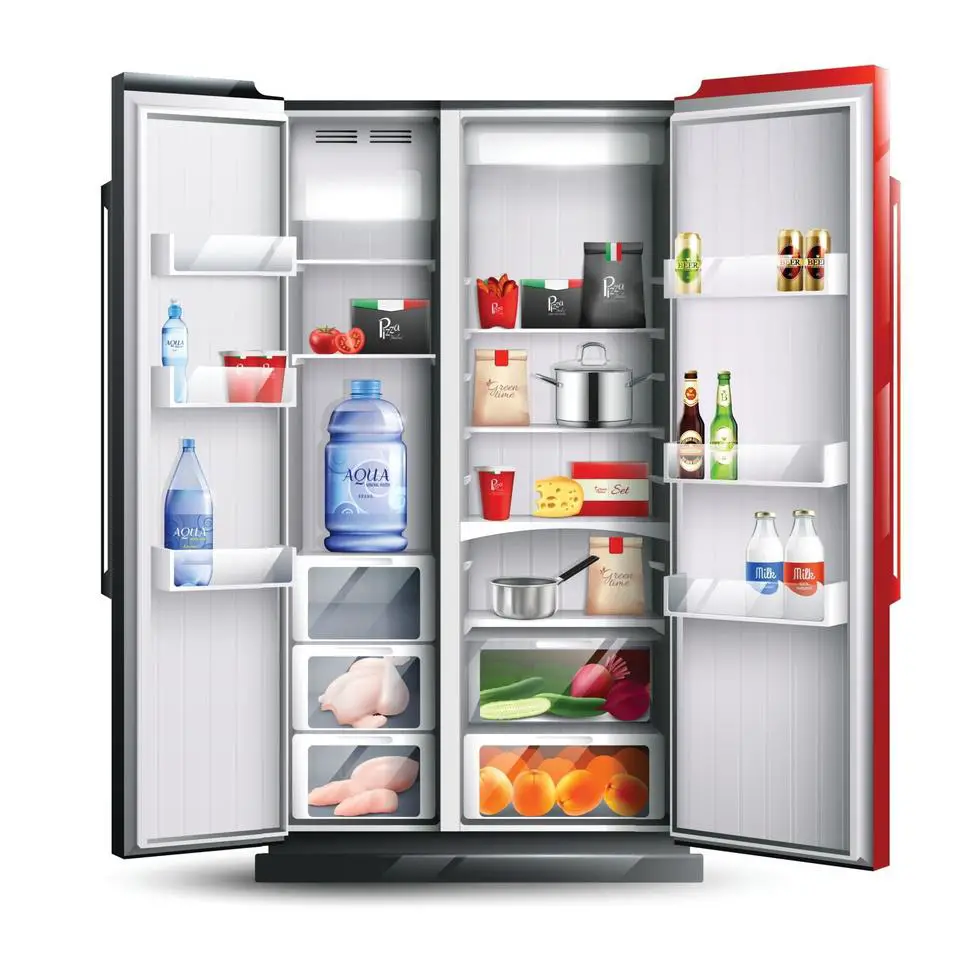
Credit: www.vecteezy.com
What Foods Should Be Refrigerated?
Refrigerators are an essential part of any home. But, it can be difficult to know what to do with them. To keep your food safe and fresh, and to make sure your fridge is working efficiently, it’s important to understand what foods should be refrigerated and what should be kept at room temperature.
The most important foods to keep refrigerated are meats, dairy, eggs, fruits, and vegetables. These items can spoil quickly if not properly stored in the fridge. Dairy products, like milk and yogurt, should be kept in the coldest part of the fridge to maintain their freshness. Meats should also be kept cold and stored on the lower shelves. Fruits and vegetables should be stored in clear or perforated plastic bags in the crisper drawers.
On the other hand, some foods should not be refrigerated. These include bananas, onions, garlic, potatoes, tomatoes, avocados, and melons. These items can be stored in a cool, dry place, away from direct sunlight. Additionally, many condiments, like ketchup and mustard, can be stored at room temperature.
it’s important to understand the dos and don’ts of refrigeration to keep your food safe and maximize the life of your fridge. Knowing which foods should and should not be refrigerated is the first step in making sure your fridge is working efficiently.
Refrigerator Cleaning and Sanitizing
Refrigerator cleaning and sanitizing should be taken seriously, as it can significantly impact food safety. Refrigerators can harbor bacteria and other potentially hazardous substances if not cleaned and sanitized regularly. To keep your refrigerator in top condition, it’s important to follow the dos and don’ts of cleaning it.
- Empty your fridge regularly and clean the shelves, drawers, and walls.
- Disinfect the insides of your refrigerator with a mild detergent or bleach solution.
- Wipe down the gasket with a cloth soaked in warm water and baking soda.
- Vacuum the condenser coils at least once a year.
- Keep the interior of your refrigerator dry to avoid the growth of bacteria.
- Don’t use harsh cleaners, abrasive scrubbers, or steel wool pads on your refrigerator.
- Don’t use scented products, as the smell can linger and contaminate food.
- Don’t store food uncovered, as this can cause bacteria to spread.
- Don’t use old cleaning solutions, as they can be ineffective and potentially hazardous.
- Don’t forget to unplug the refrigerator before cleaning it.
By following the dos and don’ts of refrigerator cleaning and sanitizing, you can ensure your refrigerator remains clean and safe. Cleaning and sanitizing your refrigerator regularly will also help to extend its life and keep your food safe and tasty.
Temperature Settings for Refrigerator
Having the right temperature setting on your refrigerator is key to keeping food fresh and healthy. To ensure food safety, the ideal temperature for a refrigerator is between 37°F and 40°F. Too low and your food will spoil faster, too high and harmful bacteria can start to grow. Depending on the model of your refrigerator, you may be able to adjust the temperature by using a temperature control dial. If you don’t have that option, you can check the temperature setting with a refrigerator thermometer.
When adjusting the temperature setting, start with a slightly lower setting than recommended. Once you have checked the temperature with the thermometer after 24 hours, if the temperature is too warm, lower the temperature setting a bit more and check again. Continue this process until you have reached the ideal temperature. It is also important to keep the door of your refrigerator closed as much as possible to maintain the right temperature and humidity.
To ensure food safety, it is important to keep the temperature setting of your refrigerator at the right level. With a bit of patience and the right tools, it is easy to adjust the temperature setting and maintain a healthy refrigerator environment.
How to Organize Food in the Refrigerator
Organizing food in the refrigerator can make all the difference when it comes to making the most of the available space, maintaining an efficient workflow, and ensuring food safety. Properly organizing food in the refrigerator is a key part of food safety, as it helps to ensure that all foods are stored at the appropriate temperatures. It also helps to keep food fresh for longer and can save you time when you are looking for specific food items.
When organizing your refrigerator, it is important to keep raw and cooked foods separate. Raw meats, poultry, and seafood should be placed on the bottom shelf, as this will help to prevent any raw juices from dripping onto cooked foods. Vegetables and fruits should be stored in the crisper drawers, as this will help to keep them fresh. Dairy products should be stored on the top shelves, as this will help to keep them away from other food items.
It is also important to keep food items in their original packaging or containers. This will help to keep them fresh for longer and will help to prevent any cross-contamination. If you are using reusable containers, make sure that they are sealed properly and labeled with the food item and the date that it was stored. Additionally, make sure to regularly check expiration dates and discard any food items that have gone bad.
By following these guidelines and taking the time to properly organize your refrigerator, you can make the most of the available space and keep your food safe and fresh.
Troubleshooting Common Refrigerator Issues
Keeping your refrigerator running optimally is essential to ensuring that your food stays fresh and safe. Common issues that can arise with refrigerators include temperature control, water leakage, ice buildup, and odors. Fortunately, many of these problems can be solved with easy do-it-yourself repairs or maintenance. To help you better understand how to troubleshoot common refrigerator issues, we have put together a list of do’s and don’ts.
Do’s: Make sure your refrigerator is level. Make sure the cooling coils are clean. Ensure the door seals are tight and clean. Clean the refrigerator regularly. Make sure the condenser fan is running correctly. Replace the water filter every 6 months.
Don’t: Don’t overload the refrigerator. Don’t place hot food in the refrigerator. Don’t place food too close to the vents. Don’t use harsh chemicals to clean the refrigerator. Don’t put items near the door that can block the seal. Don’t leave the door open for too long.
By following these do’s and don’ts, you can ensure that your refrigerator remains in top condition and that you don’t run into larger problems down the line. In addition to following the suggested tips, it’s important to regularly inspect your refrigerator for any signs of damage or malfunction. If you do notice an issue, contact a certified appliance repair technician to prevent further damage.
FAQs About the What Are The Do’s And Don’ts Of A Refrigerator?
Q: What temperature should I keep my refrigerator at?
A: To ensure food safety, the recommended refrigerator temperature is 40°F or lower.
Q: How often should I clean my refrigerator?
A: It is important to clean the inside of your refrigerator at least once a month. Wipe down all surfaces, remove any old food, and throw out anything that has expired.
Q: Should I put hot food in the refrigerator?
A: No, it is best to wait until food has cooled down before placing it in the refrigerator. Putting hot food in the refrigerator can cause other food to spoil more quickly.
Conclusion
The dos and don’ts of a refrigerator are important to keep in mind when using one. Do keep food items separated and organized, regularly clean the refrigerator, and stick to expiration dates. Don’t overcrowd the refrigerator, forget to defrost it, or leave the door open for too long. Following these guidelines can help keep your food safe and ensure that your refrigerator remains in optimal working condition.

